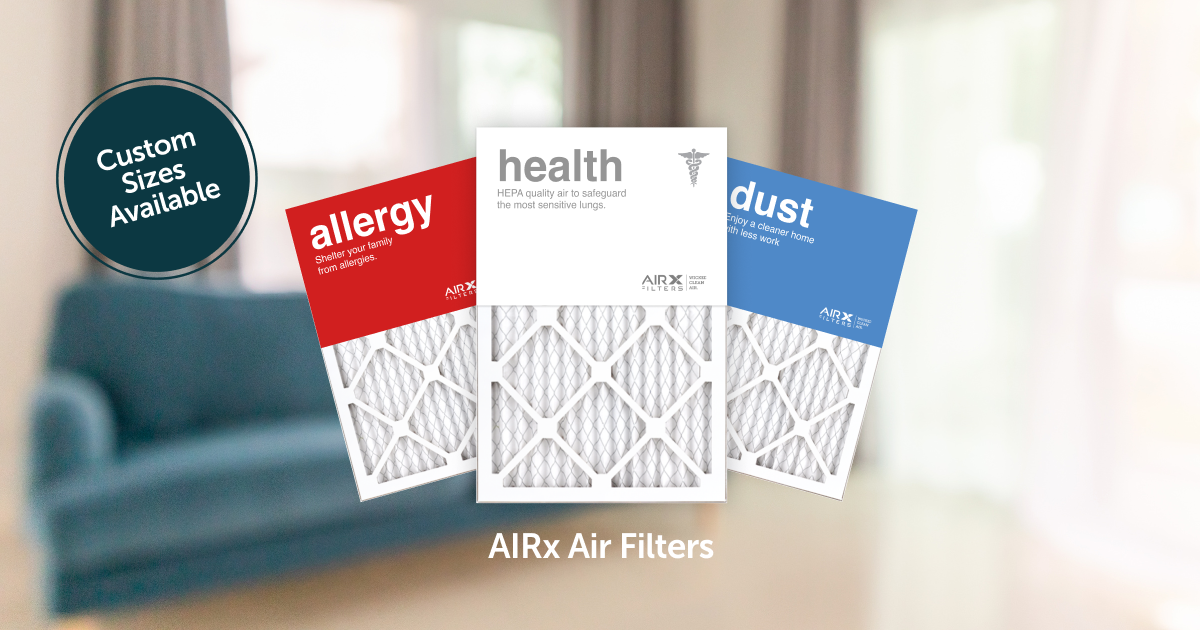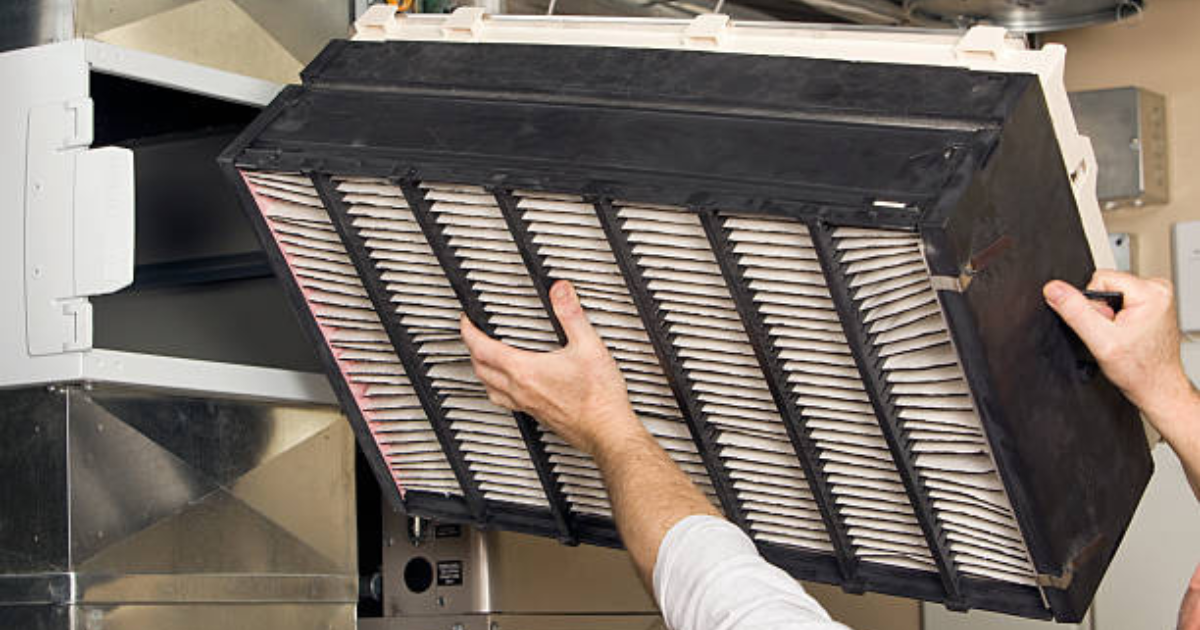When considering FPR vs. MERV vs. MPR, you should know that the one thing they all have in common is that all are different rating systems for HVAC air filters. Of the three, MERV is considered the industry standard – the others are proprietary names.In other words, popular brands are using their own rating systems to rate their air filters. As you might expect, where products with proprietary rating systems compete with those using the industry’s standard rating system, there’s bound to be confusion.
So, the plot thickens. The goal here is to sort out the proprietary vs. non-proprietary confusion. Let’s dive into the nitty-gritty so you’ll have a smoother experience next time you shop for a home HVAC filter.
What Are HVAC Filters?
You might ask this question if you’ve never maintained a furnace or HVAC (heating ventilation air conditioning) system before, which is the case for a lot of people. Quite simply, as air comes into your HVAC system from outside and is heated or cooled, a variety of organic and inorganic particles need to be removed before it’s completely safe for you and healthy to breathe. That’s where HVAC filters come in.
Since HVAC components themselves are also proprietary, each brand or model needs a specific filter. Since air filters vary in size, each specific filter only fits a limited category of HVAC systems, maybe even just one. That’s why people often need help when selecting the right filter at the store. Moreover, each type of furnace filter is further distinguished by its rating, which we will cover next!
The FPR vs. MERV vs. MPR Rating Scales for Air Filters
Filter-rating scales indicate not only the quality or the air filtration, but also the specific types of particles removed. All air and furnace filters being sold must meet basic safety requirements, and most brands have higher-level filters to address particular needs and situations.
MERV
MERV stands for Minimum Efficiency Reporting Value. As mentioned above, the MERV rating system for HVAC filters is considered the industry standard, making it more trustworthy.
MERV ratings report a filter’s ability to remove air particles between 0.3 – 10 microns (µm). The MERV rating scale indicates the efficiency of an air filter at doing this. The MERV scale begins at level 1 (3.0 to 10.0 µm or less than 20% of particles). It goes up to level 16 (0.3 – 1.0 µm or over 75% of particles). Typical MERV ratings for furnace filters are 4, 8, 11, or 13—with various pollutants removed at each level of filtration.
For example, a MERV 4 filter removes dust, lint, and pollen. However, a MERV 13 filter removes those particles along with others such as dust mites, mold, pet dander, smoke, smog, viruses, bacteria, and more.
Did you know that a filter with a very high MERV rating removes particles so fine that the airflow resistance in the filter can potentially damage HVAC units that use it? Be sure that your system can handle this level of filtration before buying the air filter! To summarize, the MERV levels indicate precisely what a buyer is paying for when shopping for home filters, allowing them to make informed decisions about whether any given furnace filter will meet or exceed their household’s needs.
FPR
FPR (which stands for Filter Performance Rating) is a rating system developed by and is exclusive to Home Depot, the giant home repair, maintenance, and furnishing retailer. While FPR ratings correspond to MERV, it’s a rough set of comparisons. For example, a MERV 6 rating has no equivalent FPR, and there is also no exact FPR equivalent to a MERV 13 rating. Consumers might find it challenging to interpret these discrepancies when shopping for Home Depot furnace filters if they’re more familiar with brands that use MERV or another rating system, such as MPR.
MPR
MPR is a filter rating system developed by the 3M corporation for its line of Filtrete filters. Filtrete is a well-known brand that’s sold by Amazon, Target, Walmart, and other large retailers, among others.
Having just read about the FPR ratings, you won’t be surprised to learn that there are discrepancies between the MPR and MERV ratings, as well as between the MPR and APR ratings (APR is a rating used by the brand Accumulair). Plus, sales of Filtrete filters aren’t limited to a single retailer, unlike APR filters. This means that many retailers, including independent ones, must expect their customers to navigate two different rating systems: MERV and MPR.
The Air Filter Proprietary Rating Issue Broadly
The filter industry is not the only one impacted by proprietary rating systems that exist alongside those developed as industry standards. The situation affects everything from capital markets to environmental sustainability, not to mention everyday consumer products.
According to CENELEC, a European organization that supports the development of industry standards, “standards are everywhere and play an important role in the economy.” Standards achieve the following:
- Make it easier for different businesses to collaborate.
- Make it possible for companies to adhere to relevant laws and regulations.
- Hasten the introduction of new and innovative products.
- Make it possible for new and existing products, services, and processes to be interoperable with those that already exist.
Still, as long as there’s healthy competition in the marketplace, conflicting standards probably will continue to occur. It is important to note that most filter manufacturers who utilize a proprietary rating system, such as FPR or MPR, will also provide the closest equivalent MERV ratings in the product details. Find and use the MERV rating to compare air filter options more easily.
Filtering Out the Best Information
Confusing as the different filter rating systems may be, HVAC filters are nonetheless critical to your home and the health and safety of those living there. This has never been more important than now, with increased air pollution. We can expect the issue of FPR vs. MERV vs. MPR to continue and hope that employees of the various companies selling air filters can assist customers adequately in making an informed decision before buying.

At Discount Filters, we believe in being upfront with our customers about what our products do without throwing other confusing ratings into this mix. This is why we only utilize industry standard MERV ratings for our air filters. If you’re interested in what our filters can do for you and your home, check them out here!
Other Frequently Asked Questions
What is the difference between FPR 7 and 9?
FPR Rating 6-7 (Better) – Filters out large particles like dust, pollen, pet dander, lint, and dust mites as well as bacteria and mold. FPR Rating 8-9 (Best) – Filters all of the above in addition to smoke, fog, and some allergens.
What is a good FPR for air filters?
FPR 4-5 are considered good air filters for households. They help trap common particles like dust, lint, dust mites, pollen, and pet dander.
Is a higher MPR filter better?
The higher the MPR, the more small particles your Filtrete filter captures. The answer to this question depends on the individual’s preference. If the goal is to help protect your home from odor, then you would want to opt for a higher MPR rating in this case.
What MERV rating is best for home use?
MERV 8 filters are the most popular choices for households because they provide a balance between performance and adaptability.

